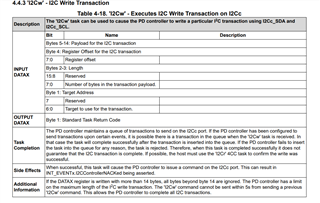Other Parts Discussed in Thread: BQ25792, TPS25751
Dear TI,
In current project I used TPS25750 as USC-C PD host and external EEPROM CAT24C256 for storing data configure from "TPS25750 Application Customization Tool".
After answering some question I got .c configure file and was able to flash it into eeprom and BQ25792 also negotiated expected voltage and current.
From my understanding that TPS25750 ack as I2C master to drive BQ25792 with configuration flashed on CAT24C256.
So do I really need to do and further control through i2c registers of BQ25792 directly or it all driven from TPS25750 side?
And how was the frequency TPS25750 configure BQ25792, from only start up or some interval? What if after start up, I directly control BQ25792 by its register, will it causing conflict or something?
Thanks!
Thi


